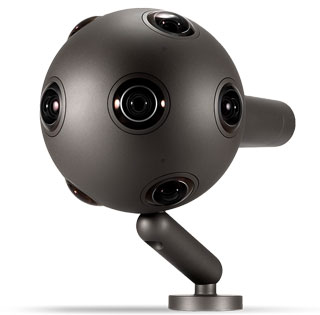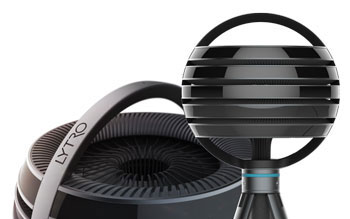Facebook, Lytro, Nokia, Samsung, they have one thing in common. They all launched their own 3D virtual reality cameras. Barely a market a year ago, virtual reality (VR) is poised to become the next big thing in camera development and visual media, with many other companies joining in, such as GoPro offering the VR camera rig Omni holding six cameras — a welcome update from the company’s former Odyssee a.k.a. Google Jump rig requiring 16 cameras… So where are VR cameras heading? Each product offers unique features, yet it’s still more of an experimental field aimed at professional studios with prices way above consumer spending power.

Take Nokia’s futuristic OZO with a $60,000 price tag. The Finns, once market leader in mobile telephony, take quite a gamble with the first VR camera specifically designed for professional production. OZO is Nokia’s first product since the phone days. They’re eager to get back into the game and want to outdo themselves.
Capturing 360° spherical video and 360 x 360 surround sound with unique interactive monitoring, OZO features an intriguing industrial design combined with a revolutionary concept.
The launch of OZO came as a surprise to many, but it marks Nokia’s slow first steps back into the consumer space in which it hopes to spark a “consumer revolution.”
Here’s how OZO might change filmmaking:
Then there is Samsung’s Gear 360 and Facebook’s Surround 360, a spherical camera not for sale and also not aimed at consumers, but at serious filmmakers. The intent of the 360° camera is to entice developers to take Facebook’s prototype design and run with it.

Facebook engineers spent $30,000 buying the raw materials for the open source rig. The company says volume buys and tweaking of the formula could bring the costs down. The cameras — the rig holds 17 of them — are made by Point Grey, they make cameras for industrial, scientific, medical, traffic and security applications.
With incredible amounts of data coming from all of those cameras, Facebook uses a Linux-based PC with a RAID 5 SSD array that shares the writing out across eight drives simultaneously. Controlling the rig is made easy via a Web-based interface that allows users to adjust shutter speed, exposure, frame rate and gain.
Facebook has bet big on virtual reality as a way to keep viewers connected to the social network. It paid $2 billion to buy VR gaming firm Oculus, which just released its Rift gaming device. But there’s no market yet, so Facebook wants developers to make as much content as possible to expand the market, hoping that a broader community can move things forward faster.
But the most interesting new player in the field is Lytro, known for its light field technology. Lytro recently decided to exit the consumer stills market to change focus and fully concentrate on cinema. Imagine, the technology gives you focus and aperture sliders in post-production. Don’t I want this in my editing software.
The 755MP Lytro Cinema camera with 300FPS also promises to kill off the green screen, using depth information — instead of chroma keying — to swap out scene elements or easily composite in CGI. In the video above, see at timestamp 02:55.

With Lytro Cinema, every frame of a live action scene becomes a 3D model: every pixel has color and directional and depth properties bringing the control and creative flexibility of computer generated visual effects to real world capture.
Exciting, truly distinct and different. Not a 360° camera, that crown belongs to Lytro’s Death Star-like Immerge camera, but a technology that captures all 3D information in a scene, thereby turning any scene into a green screen.
With so many players betting on VR, this could change many things. Just imagine, surround cinemas turning anything virtual into reality.


